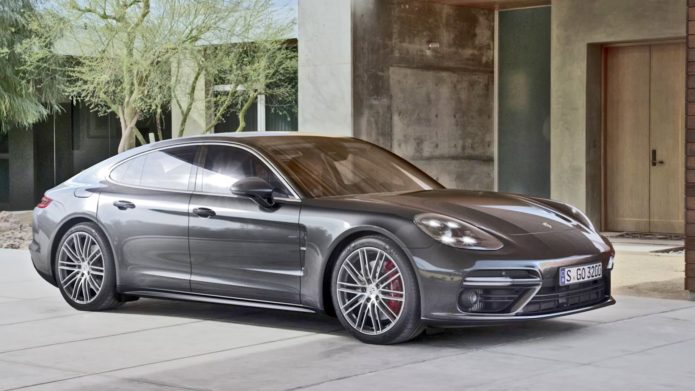“Fahren, fahren, fahren auf der Autobahn,” Emil Shult chants out of the Bose stereo as we speed up the A1 in the new Porsche Panamera 4S. Kraftwerk’s Autobahn might be a cliché choice of soundtrack, but for a late night motorway mission in a fast German car it has few equals.
The Autobahn – Germany’s famous motorway network, some of it without speed limits – is the natural stomping ground for this, Porsche’s largest car. In Porsche terms, it’s rather conventional – the engine is under the front bonnet, it has four doors, there’s room for luggage in the back and the individually low-slung rear seats are capable of accommodating a pair of 6’2 humans – but its controversial quality has always been how it looks. That need to transport tall people in the back turned this 5-metre long saloon into a true hunchback car, with an ungainly roofline and rear end.
Impressive though the Panamera has always been, technically speaking, the previous car was a curio. Usually V8-engined, speed-focused and difficult to look at, the problem was that it was never going to drive as well as a Porsche sports car like a 911 because of its sheer size. Nor was there the room in the rear for it to qualify as a true limousine that would get used for chauffeur duties.
For 2017, Porsche has set out to fix the Panamera’s appeal: it up-sizes the body’s length, but remains the same height and width; there’s more space in the back, but the whole thing looks so much better with added tension in the surfaces and sharper detailing; and it’s also lighter thanks to the VW group’s new MSB platform. Under the hood of this 4S petrol format is a 2.9-litre V6 engine (440hp), which is supposedly capable of greater fuel economy (and much the same as you’ll find in the Audi RS5). Perhaps most importantly is that there’s a wealth of new-in car tech.
So is the new Panamera just a car for the Autobahn, or something altogether different in 2017?
Porsche Panamera 4S review: From Quasimodo to gracious beauty?
It wasn’t hard to single out the biggest problem with the old Panamera. Yep, the way it looks. While the old car certainly had presence, and a minor facelift part way through life made it more palatable, it was odd-looking, especially in profile and from the rear.

Despite having more space in the back, the new Panamera is much more gracious in its looks. It is only millimetres longer – but it looks lighter and the roofline now tails down in a gracious arc which flows into a powerful rear haunch section. The overhang at the rear is longer and the roof above the rear passenger compartment 20mm lower than before, which accounts for much of the way we read it as better looking.
The rear itself incorporates the new style of Porsche: slim tail lamps joined together by a full-width rear lamp bar and with a fold-away spoiler above them. At night and at speed, this car looks absolutely great from behind – which is something we’d never have said about the old model.
From some angles the Panamera still looks bulbous and ultimately can’t escape the fact that it is physically too big to fit into a standard UK parking space. At 5.05 metres long, this is not an easy town car.
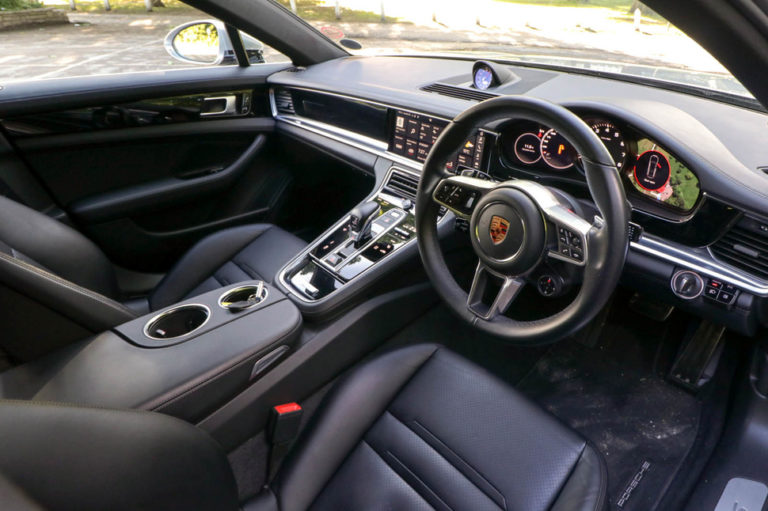
Inside, gone is the rising centre console with its Vertu (RIP) phone-like parallel button strips, replaced by a new, black gloss, smart-surface touch panel that works very much like a giant Apple Macbook trackpad.
Everything on the surface – bar the raised, metallic rocker switches for the gear-shifter and climate control – is a digital button, set in one surface which comes to life when you turn the car on. When you press to activate something – including exhaust, suspension settings, stop-start function, traction control, some climate functions – the unit clicks and feels like it’s physically moving in response to your inputs, providing very useful haptic feedback. The Porsche unit doesn’t physically move about, your brain is simply tricked into thinking it’s moving – similar to how Audi’s brand new R8 functions, with its hyper-tech interior.
Elsewhere, the old square 4:3 centre screen has been replaced by a giant 12.3-inch widescreen unit which integrates into the sweep of vertical dashboard surface. And in the cluster, the analogue Porsche rev counter in the centre of a five-dial arrangement remains, but the four dials that surround it are now digital, rendered on a pair of 7-inch TFT screens.
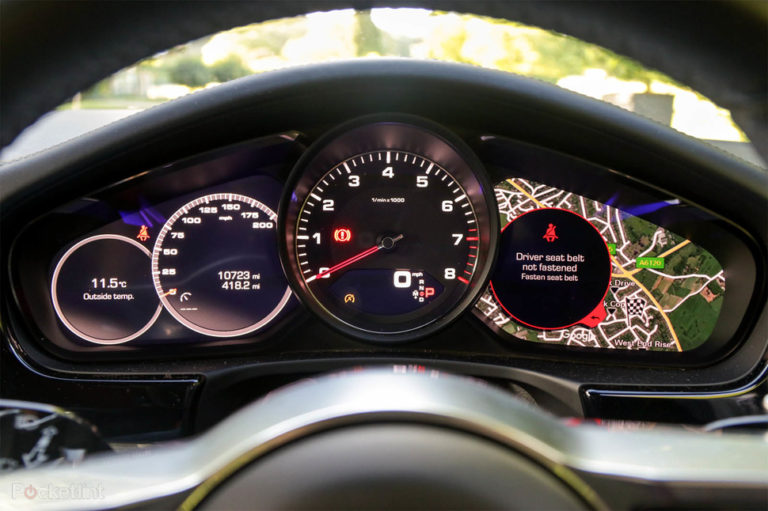
It all looks rather impressive and neatly blends a design that is unmistakably Porsche, yet looks brand new and incredibly high-tech. Sense a “but” coming…?
Porsche Panamera 4S review: Porsche Advanced Cockpit is a complex, beautiful mess
One of the reasons we were so keen to get our hands on a new Panamera is that, having sat in the car at its Paris motorshow launch in 2016, we felt the on-board tech needed a full going over in order to get a full sense of it.
This new Panamera is easily the most tech-heavy vehicle that Porsche has ever built. So as tech and gadget freaks, should we be rejoicing? Well, yes and no. The system is deeply complex and capable. The frustrations that many systems create – because their latency is so bad, rendering and graphics are poor or because they provide less functionality / accuracy than a smartphone – are largely absent here.
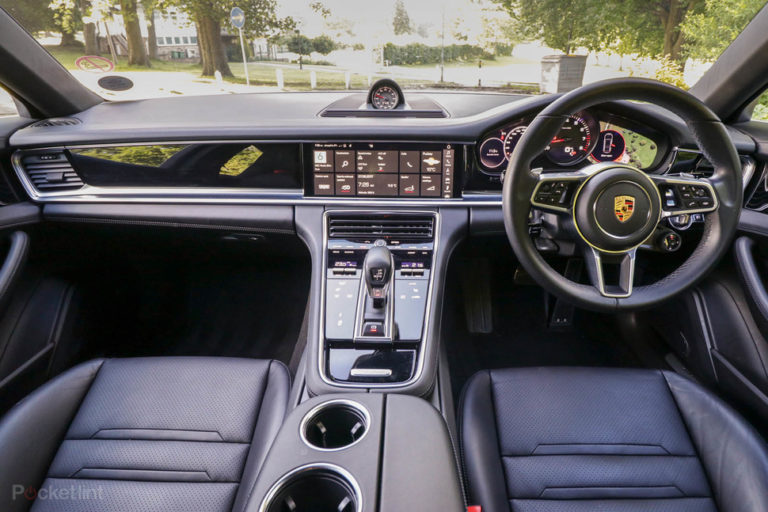
Porsche should be praised for this, because it has built a system that is clearly using very fast processors – the latest Nvidia graphics chips – and generally reacts and responds as fast as your hand can move. Indeed it can match (and possibly even better) your smartphone’s response.
It’s also one of the only systems we’ve used that, as far as navigation is concerned, has managed to work almost flawlessly with regard to online search and points-of-interest. It doesn’t force you through a set of pre-defined input steps. Instead, simply start typing where you want to go and that’s it – the Panamera finds it. What’s more, the online-traffic system on the maps is spookily accurate at predicting arrival times and where there are hold-ups, and with the Google earth overlay it looks really quite beautiful when laid out across the car’s new high-resolution centre screen.
In the cluster, the fact that the speedo, fuel, engine temp and info display were replaced by digital representations of themselves isn’t the cause for concern we thought it might be. They remain clear and as easy to read as in Porsche’s analogue versions of the same info display – as you’ll find in a 911.
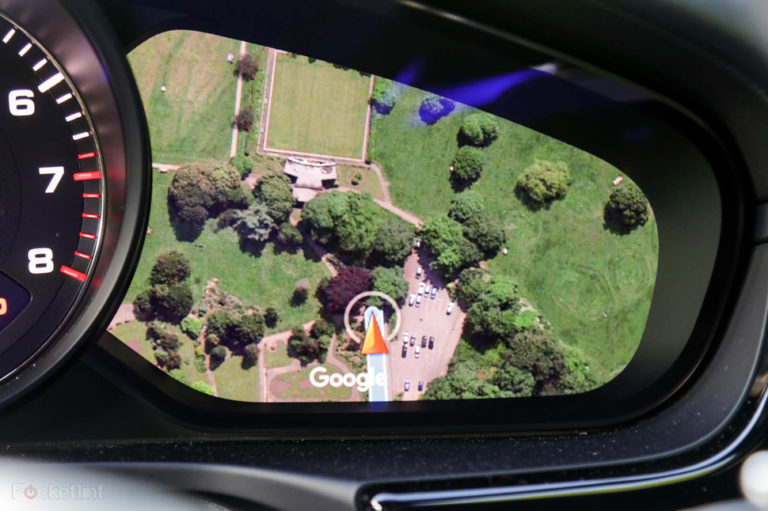
What we miss in the instrument cluster and from the driving seat generally, is the secondary stalk selector – again, as you’ll find in the 911 – which allows you to scroll through and select new radio stations, phone numbers, zoom the nav map in the cluster display. The Panamera gives you buttons on the steering wheel instead, but these can’t do as much as the stalk solution.
So what’s the problem? Complexity. There is a staggering amount of information and configurability available in this car, and it’s nearly all accessed through screens or digital surfaces. We found that a problem in two ways.
First, there is a vast amount of screen real estate – which Porsche makes use of to display information about the state of the car, what’s happening outside, the infotainment – which means there’s a staggering amount to look at. Some automatic reconfiguring, such as zooming in or messages popping up, mean your eyes can be distracted from the road.

Second, within many menus and selections the UI approach of floating semi-transparent boxes over maps or images creates a confusing digital hierarchy. It is hard to read at times, hard to know what you should be looking at or pressing, or simply presents you with too much text in other scenarios. Additionally, some of the key buttons are too small, given how big the screen is. It’s fine when you’re sat still – but if you’re on the Autobahn then it can get a little bit much (a bit like our repeat reference there, eh?).
Physically operating the system – getting back to the home menu, adjusting the centre air vent (bizarrely, only controllable via the screen), setting the rear screen demister, and so forth – requires hitting a very precise point on either the centre screen or the digital console panel. And it’s not very forgiving if you get it wrong. And you will get it wrong sometimes. We lost count of the times we missed and ultimately selected an option we didn’t want. It’s a car crying out for a physical back button, something more physically tactile out of the line of sight.
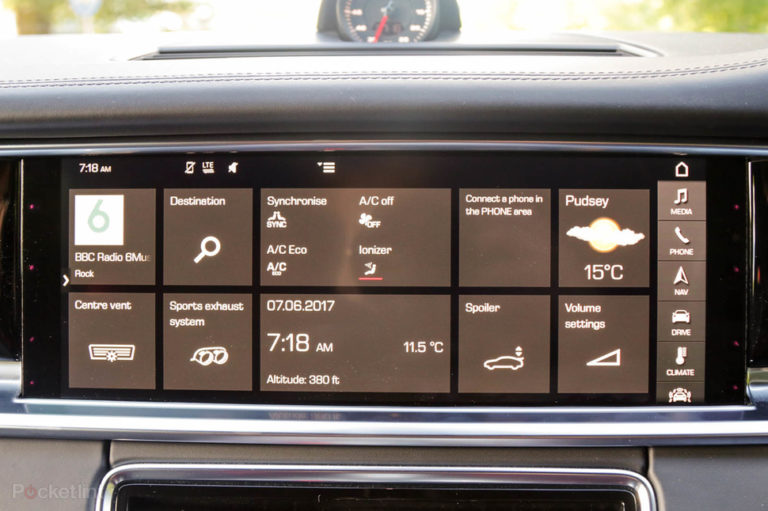
Overall, anything you can think of that you might want to do via the car – even check-in for a flight and then double-check whether it’s on time – can be done via these screens. It is an infinitely adjustable in set up. But sometimes you crave a “simplify” button; a button that doesn’t exist. Much the same can be said of every new car – so we’ll reiterate how impressed we are at the way Porsche has aesthetically integrated the tech into the cabin, and by how quick-reacting this technology is to inputs and search requests.
Porsche Panamera 4S review: Back or front seat driver?
Sitting in the back of the Panamera is an enjoyable experience that’s worth mentioning given this car might be used for executive, chauffeur-style duties. The seats in the back are as good, perhaps even better, than those in the front. Notably, you sit low, so the Panamera feels sporty even from back here. There’s enough room to stretch out, too.
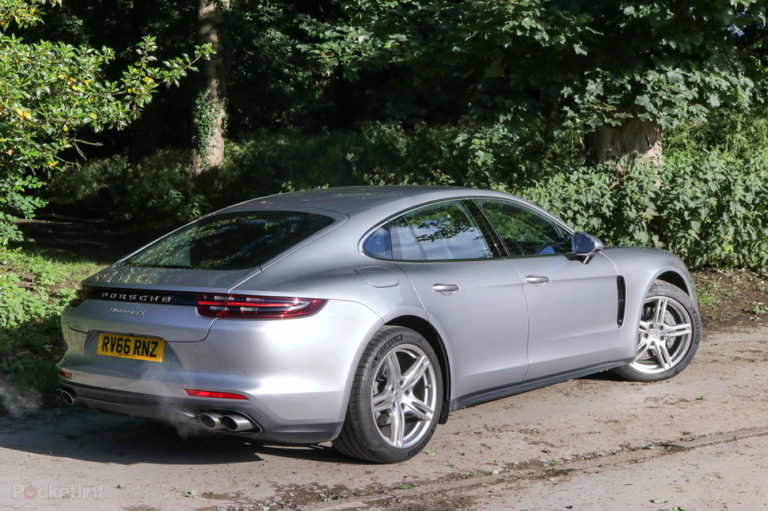
The centre tunnel section also does its own stretching: right through the car, dividing the two rear seats with a dedicated screen and control panel for their use. Amusingly you can use this to control the radio station, sat nav destination and so forth. Clearly this is the chauffeur option, so don’t worry – if you have kids you can deactivate it to avoid the carnage.
But let’s get real, this is a Porsche. And that means that the only place you really want to be sat is in the driver’s seat. Yes, the Panamera may be a big car, one that weighs nearly two tones, but it still knows where and by whom it was made. Which means perfect control weights, performance that is so hair-raising it makes you question if the on-paper figures aren’t a little conservative, and a ride and handling balance that is, most of the time, completely at odds with the two tonnes of metal and steel you’re blasting down the road.
Yep, the 2017 Panamera is reactive and great fun to drive. Standard four-wheel drive means you’re unlikely to embarrass yourself given the eventual understeer (although from our forays, you will have to be behaving like an utter lunatic to discover this). We were being good on the public roads, honest.

This Panamera S petrol model has 440hp and covers the 0-60 sprint in 4.4 seconds. It runs through an 8-speed PDK gearbox, which is the car’s weakest link. Like all double-clutch gearboxes it can make for slightly jerky progress at low speeds, but one you’re above walking pace its lightning sharp changes, which you can make manually via the metal steering wheel paddles, simply add to the thrill of the drive.
The 2.9-liter V6 is still a nice-sounding unit thanks to the sports exhaust of our test car augmenting the experience. However, it’s not a patch on the old V8 unit.
It sounds crazy, but we actually preferred this V6’s overall behaviour and sonic performance compared to the last 911 we drove. The Panamera’s engine’s response is quite astonishing: its spread of power from around 1500-6000rpm is something you start to take for granted, as it doesn’t really matter the road speed or gear you’re in, when your foot goes down it just flies.
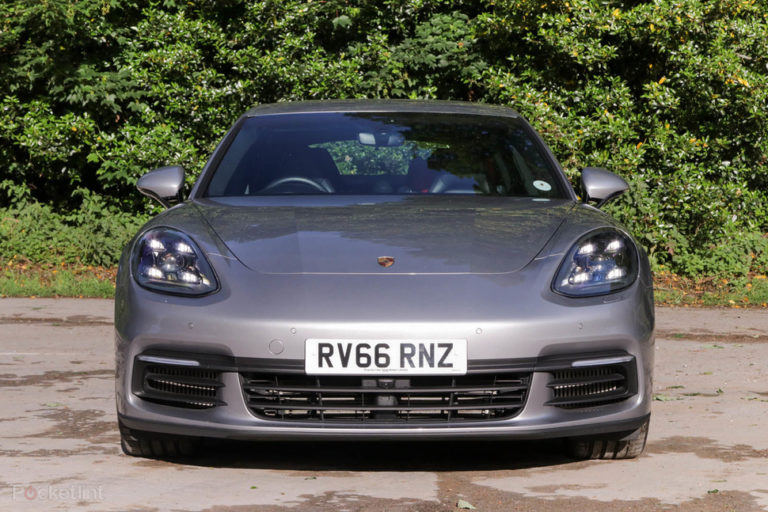
Oh, and the V6 also managed a faintly incredible 32mpg across the 500 miles we covered in this Panamera, which puts it in a better spot than the V8 for a car that you actually have to own. For something this big, with this much performance, that mileage is impressive.
If you’re really in need of more performance than what the Panamera offers, then you’ve got more iron will and nerve than us. But there is a Turbo and Turbo S version, both of which sit in the range above this.
Verdict
The Panamera 4S costs £88,700 as standard, so it’s not cheap. Our model was optioned up to £106,482, however, with notable additions like 20-inch wheels, a Bose sound system, sports exhaust and tail pipes, adaptive air suspension (which explains the excellent ride) and LED lamps. Oh and the GT Silver metallic paint, which costs a hilarious £2,808.
Yet it always feels odd to question the pricing of cars like this – especially when it’s so hard to pinpoint rivals. The Mercedes S-Class, BMW 7-Series and Audi A8 are all barge-like limousines which possess none of the dynamic qualities of the Porsche, while Maserati’s Quattroporte feels neither as sporty or as special.
In a way, what Porsche blends together in the Panamera is the best aspects of its coupe sports cars, and those of a large limousine. Whether you’re a Porsch-o-file with a family, own a business and occasionally need driving around, or just want an everyday exec-express that still feels special, then the Panamera ticks the boxes. It doesn’t excite quite like Porsche’s sports cars, but it is much easier to like than the car it replaces – particularly wearing the right set of wheels and in a strong colour such as dark red or blue.
Overall, then, the 2017 Panamera is better looking, more efficient and better performing than its predecessors. Its old odd-ball character has been banished and there’s no question that the newer car is the better solution. Sure, modern developments mean the steering and engines perhaps aren’t as great as they once might have been in a car heralding from Porsche’s home of Zuffenhausen.
But the Panamera’s biggest problem isn’t that. Its now so capable, so complex and so fast that you’re left feeling that you simply can’t use this car’s full potential on the UK’s crowded roads. For that, you still need to “fahren, fahren, fahren auf der Autobahn”…
(pocket-lint.com, https://goo.gl/cvqdeP)


